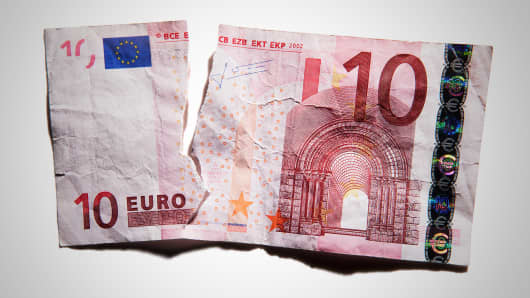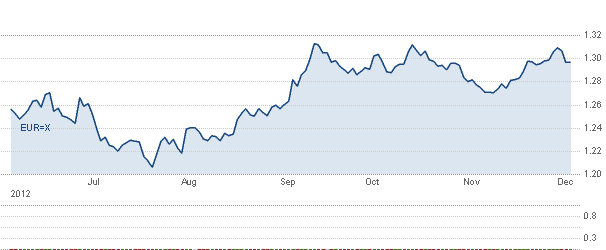The euro, which has been remarkably resilient recently, saw a major selloff leading to its biggest one-day loss in a month after the European Central Bank (ECB) slashed its growth estimates for this year and next, and hinted at a possible rate cut in 2013.
Despite this setback, foreign exchange strategists expect the single currency to bounce back quickly. They see the euro supported by worries over the looming "fiscal cliff" of tax hikes and spending cuts in the U.S. and uncertainty over what the Federal Reserve's next move will be after its bond buying program, "Operation Twist" - which involves selling medium-term bonds and using the proceeds to buy longer-term ones - comes to an end on December 31.
(Read more:
After the Fed's "Twist" Comes the Hard Turn
)
"We don't think ECB President Draghi has completely killed the rally in the euro, the currency pair has had a very nice run over the past few weeks and a correction is not unexpected," said Kathy Lien, managing director of forex strategy for BK Asset Management.
ECB chief Mario Draghi on Thursday painted a bleak outlook for the currency bloc's economy and said policymakers had discussed negative deposit rates, prompting a steep fall in the euro.
The euro, which has risen over 5 percent against the U.S. dollar since August, was trading near multi-month highs against major currencies including the greenback, British pound and Japanese yen on Thursday, giving rise to profit taking overnight.
"The euro had been built up, so yesterday's (Thursday's) move also reflected some profit taking," Mitul Kotecha, head of global foreign exchange strategy at Credit Agricole, who expects the single currency to end the year at $1.30.
Besides uncertainty around whether the U.S. will manage to avoid the $600 billion "fiscal cliff" in January - which is negative for the dollar - Kotecha said the euro will also see some support from central bank buying.
"We've seen more flows from central banks - probably a result of reserve reallocations for the new year - which will help support the currency," he said.
Barclays' technical analyst Dhiren Sarin, who expects "choppy gains" in euro-dollar over the next one-two months, said support areas for the single currency are $1.2875 and then the 200-day average of $1.2790.




